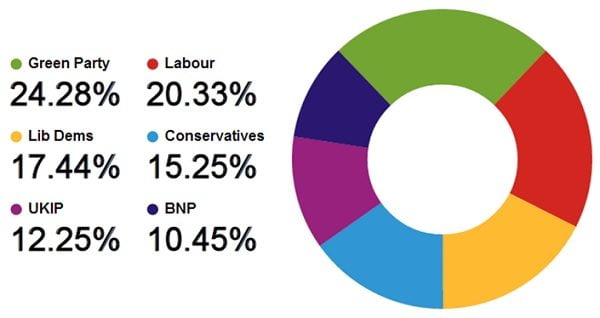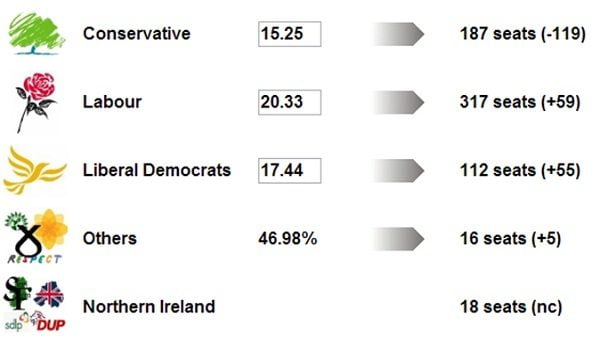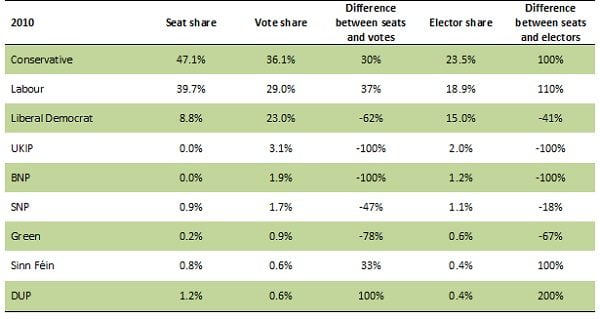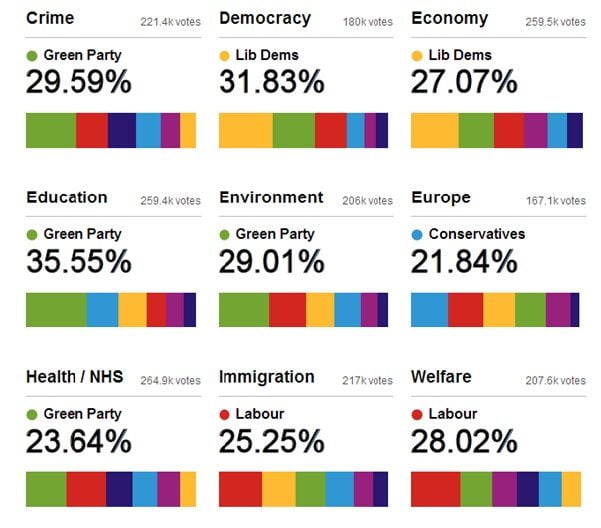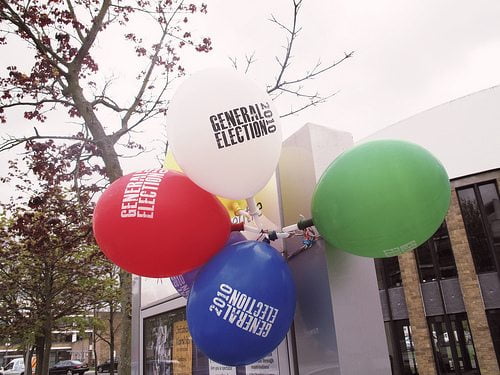

Features
If we voted for policies at elections, and not parties, the results might surprise us all
We recently spotted a link to a site called Vote for Policies that tested policy preference during the 2010 general election. With 92 weeks to go until the next general election, Simon Leadbetter digs deeper.
In the local elections, we urged readers to vote Green. This was not because we agreed with every policy of the Green party, but to maintain pressure on the major parties to pursue sustainable policies. This was due to the consistent evidence that mainstream parties were significantly out of touch with the public mood on sustainability issues.
In a recent letter to the Guardian, concerning the recent Labour/Unite Falkirk imbroglio, Laurie Marks of Harrow in Middlesex stated, “Opinion polls on just about every major issue, be it renationalising the railways, abolishing tuition fees, taxing the rich or nuclear disarmament (with the sole exception of immigration), show that public opinion is firmly to the left of every major party; it has been shifting that way for over a decade while Westminster has shifted ever further right.”
“The responses of 300,000 people on the Vote for Policies website […] show that the most popular policies are those of the most left wing party in the test: the Greens.”
That 300,000 figure tweaked our interest.
Vote for policies, not personalities
Vote for Policies is a social enterprise founded by Matt Chocqueel-Mangan. It is designed to make it easy to compare what the political parties are promising to do. Its stated aim is to help voters make informed, unbiased decision about who to vote for.
Speaking to Blue & Green Tomorrow, Chocqueel-Mangan said, “My job as a digital consultant means that if something doesn’t work, it’s because there is a usability problem – not a user problem. I decided to take the same approach with solving the issue of voter engagement.
“Rather than assuming people don’t want to take part or are unable to express an opinion, I found a way to make it easier.”
By comparing the policies from six UK political parties (Conservatives, Labour, Lib Dems, Green party, UKIP and BNP) on a range of key issues, site visitors were able to show which parties someone should vote for. Some 337,920 surveys were completed; far larger than any poll. The Financial Times described it as a “test well worth taking.”
Chocqueel-Mangan said, “I was surprised by how quickly it spread. There was no marketing plan. It’s amazing what a simple idea and social media can achieve together!”
Based on policies alone, the popular vote would have been:
We asked Chocqueel-Mangan if it changed his vote (“Yes it did. And it felt quite liberating!”), and whether he thought it changed the vote of others. He said, “The comments we received suggested lots of people were surprised by their results, and felt confident enough to change their vote, or they decided to vote for the first time ever. We’ll be tracking more behavioural outcomes next time around so we’ll get real data on that.”
Plugging these into UK Polling Report’s basic swing calculator, we see the major parties would still retain control of the House of Commons:
Despite securing just 53% of the vote between them, the three main parties would still hold 94% of the seats – leaving only 6% of the seats to those parties which had secured 47% of the vote.
Labour would be the largest single party, but short of an overall majority by nine seats.
Politicians who cry crocodile tears about voter apathy and falling turnout, but defend the current first past the post system, don’t really believe in representative democracy. If an election doesn’t ‘work’ (i.e. people turn out and vote), it’s because there is a usability problem – not a voter problem.
The discrepancy between seats, voter and elector share is striking:
Difference between seats and votes is the ratio to votes cast nationally to seats in parliament (e.g. Conservatives have 30% greater share seats that their 36.1% share of votes). Difference between seats and electors is the ratio of share of the entire electorate to seats in parliament (e.g. Labour has 110% more seats than their 18.9% share of electors).
On crime, education, the environment and health/NHS, the Greens secured public support. On democracy and the economy, the Lib Dems won and the Greens came second. Europe was won by the Conservatives with the Greens coming fourth. Labour secured support on immigration and Welfare with the Greens came third and second respectively.
“From what the people who used the site told me, there is still real fear of wasting a vote if you don’t support the main parties”, said Chocqueel-Mangan, when asked what he thought explained the success of minor parties on policies but their failure to gain votes.
“I tried to help counter this by showing how other people in your constituency think – and next time with even more people using the site, we could give more people the confidence to vote according to their policy preferences.”
Tomorrow we’ll look at the votes of the party leaders. Whatever the media would have us believe, we operate a parliamentary system as opposed to presidential one. A party leader still needs to win their constituency to be able to prime minister. If he or she is the leader of the party that commands the largest number of seats overall, then they get the keys to number 10.
Further reading:
We need Conservative, Labour, Liberal Democrats and nationalist parties that get sustainability
Vote Green (where they can win) if you care about the future
Big is the enemy of the good in all industries
Are we the zealots of a new religion; an environmental Taliban that is silencing dissent? Not really
UKIP’s success in the local election is a rallying cry for smaller parties


 Environment10 months ago
Environment10 months agoAre Polymer Banknotes: an Eco-Friendly Trend or a Groundswell?

 Environment12 months ago
Environment12 months agoEco-Friendly Home Improvements: Top 7 Upgrades for 2025

 Features9 months ago
Features9 months agoEco-Friendly Cryptocurrencies: Sustainable Investment Choices

 Features10 months ago
Features10 months agoEco-Friendly Crypto Traders Must Find the Right Exchange
